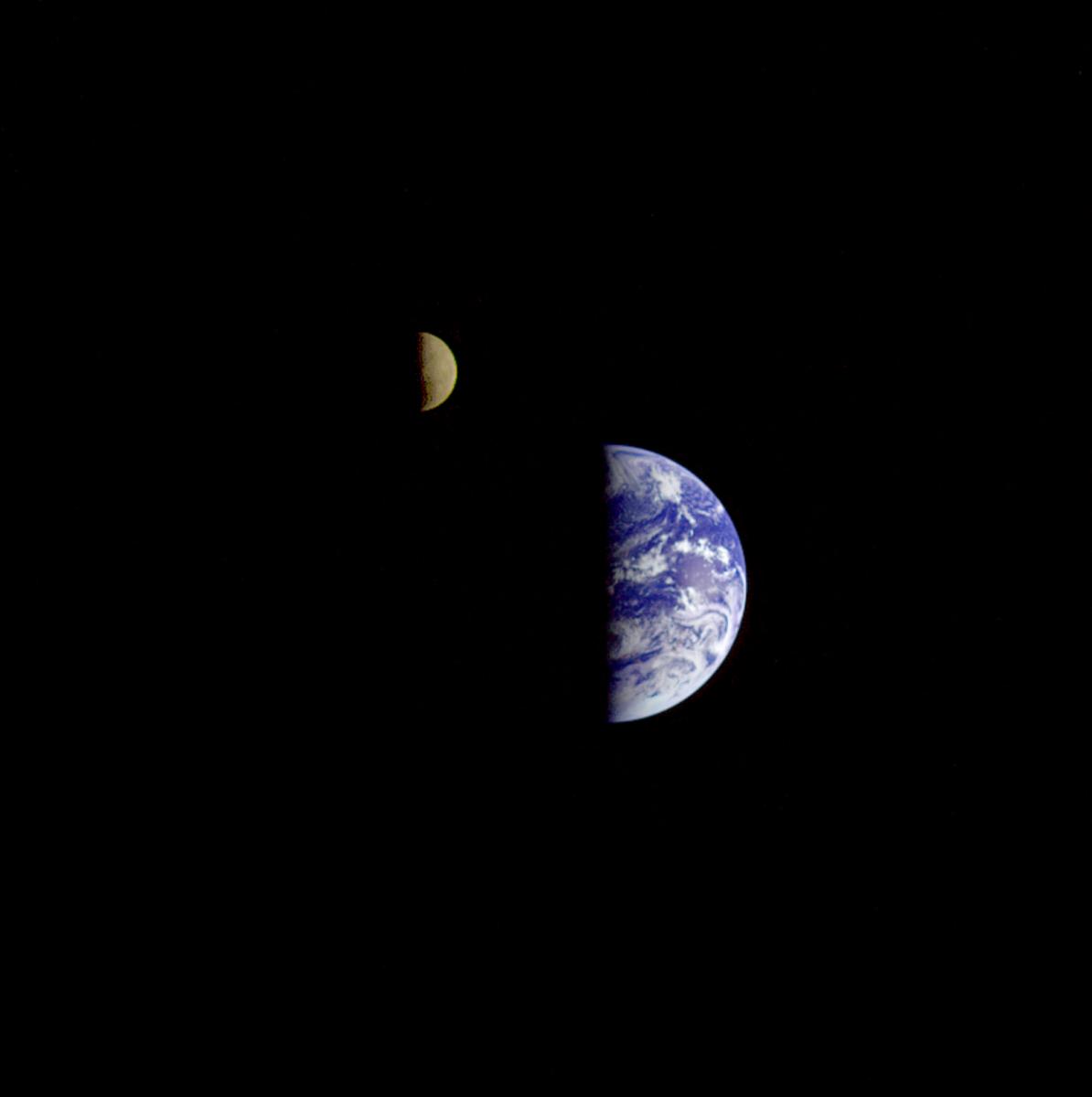Centre of Mass

the Galileo Spacecraft
Credit: NASA
The mass of an object tells us the amount of ‘stuff’ or matter it is made of. An object’s mass remains the same wherever the object is.
All the matter (or mass) in an object is distributed through its volume. The centre of mass is the exact centre of all the matter in an object. The centre of mass will have same amount of mass in every direction around it.
Two objects can have a common centre of mass. A good way to think about this is to imagine that the centre of the Moon and the centre of the Earth are connected by a very long pole. The centre of mass is the one point on the pole where it would balance on one finger. The centre of mass is always closer to the more massive object. If the Earth and the Moon were exactly the same mass, the centre of mass would be exactly halfway between them.
The centre of mass is an important idea in astronomy. We often think of the planets orbiting the Sun and the Sun staying still. In reality, the Sun and the planets all orbit the centre of mass of the Solar System. But because the Sun is so massive, the centre of mass is inside the Sun. So the Sun just ‘wobbles’ a bit as it orbits the centre of mass. Looking for a star wobbling around its centre of mass is a good way of finding exoplanets.

Credit: The Schools' Observatory
The centre of gravity is not the same thing as the centre of mass. The centre of gravity is the point at the exact centre of all the weight in an object. This depends on the gravitational field the object is in. On Earth the centre of mass and the centre of gravity of an object are usually at the same location. In space, the centre of mass and the centre of gravity of an object can be in different locations. This is due to strong gravitational field produced by massive objects like giant planets, stars, or black holes.

